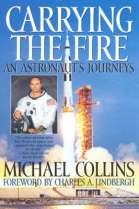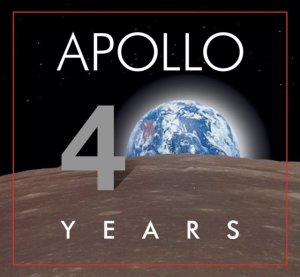 Forty years ago, the first person from this planet set foot on Earth’s satellite, the Moon. He was Neil Alden Armstrong, and with Buzz Aldrin he formed the crew of the Apollo 11 Lunar Module Eagle (Michael Collins remained in orbit about the Moon aboard Command Module Columbia). They were followed by a further six missions, one of which – Apollo 13 – did not make it to the lunar surface. On 14th December 1972, Gene Cernan and Harrison Schmitt climbed back into the Apollo 17 LM Challenger and shortly afterwards it departed. No one has visited the Moon since.
Forty years ago, the first person from this planet set foot on Earth’s satellite, the Moon. He was Neil Alden Armstrong, and with Buzz Aldrin he formed the crew of the Apollo 11 Lunar Module Eagle (Michael Collins remained in orbit about the Moon aboard Command Module Columbia). They were followed by a further six missions, one of which – Apollo 13 – did not make it to the lunar surface. On 14th December 1972, Gene Cernan and Harrison Schmitt climbed back into the Apollo 17 LM Challenger and shortly afterwards it departed. No one has visited the Moon since.
First on the Moon by Neil Armstrong, Buzz Aldrin and Michael Collins is the definitive account of the first mission to land on the Moon. It was published immediately after the event, and was written with the assistance of Gene Farmer and Dora Jane ‘Dodie’ Hamblin, two of the Life journalists who had exclusive access to the astronauts and their families.
You would expect the most authoritative book on the Apollo 11 lunar landing to be one written by the three men who actually made the trip. But would that necessarily make it a good book? Armstrong, Aldrin and Collins are, after all, astronauts and not writers – Farmer and Hamblin’s presence on the title page notwithstanding. So it came as a pleasant surprise to discover that First on the Moon is very good indeed. Not only because it tells the story of the mission with authority, but because it is readable, well-structured, and a fascinating read from start to finish.
The book is written in several voices – there are transcripts of the mission, some parts of which are annotated; there are passages by the three astronauts, typically in answer to questions; there are sections describing events at the homes of the astronauts as their families watch the mission on television; and there are passages more typical of a non-fiction record of Apollo 11, not all of which feature the Apollo 11 crew or their families. Together these build a mosaic, rich in detail, of what happened during the flight, for both those aboard and those who remained behind.
Having now read First Man: The Life of Neil A Armstrong (see here), Buzz Aldrin’s Return to Earth (see here), and Michael Collins’ Carrying the Fire (see here), I feel I have some idea of the character of the three astronauts – and First on the Moon does nothing to dispel the impression of them as people I had gained from those three books. Armstrong still talks like a flight manual, Aldrin is as blunt as he is in his autobiography, and Collins provides the light relief and culture. Those three books, however, do not cover Apollo 11 – surely the defining moment of their lives – in as much detail as First on the Moon.
First on the Moon also scores highly in another area. Since Farmer and Hamblin were embedded with the Apollo families, they witnessed the reactions of the wives and children to the mission. The families are certainly not ignored in First on the Moon, and they are quoted almost as extensively as the astronauts themselves. It makes for a rounded view of Apollo 11 – the three astronauts in space in their CSM, while their spouses and children watched and waited at home.
The book finishes with an excellent epilogue by Arthur C Clarke, entitled ‘Beyond Apollo’. It’s typical Clarkeian futurism, and with the benefit of hindsight we can see that his optimism in many areas was unfounded. After Apollo 17, no one ever left Earth orbit again – so there are no moonbases, there have been no missions to Mars. Which is a shame: I think I would have liked the late twentieth century Clarke depicts. Those familiar with Clarke’s novels and stories may spot references to his fiction in some of the points he makes.
Of course, since First on the Moon was written by the Apollo 11 crew, with the help of Life journalists, it’s not going to be “warts and all”. It puts a positive spin on the whole endeavour, and no one comes out of it looking bad. That’s not necessarily a bad thing; after all, Apollo 11 should be celebrated. When talking to Armstrong, Aldrin and Collins aboard USS Hornet after their return, President Nixon said, “This is the greatest week in the history of the world since the Creation”. Hyperbole aside, putting two men on the Moon was an astonishing achievement; and even more astonishing when you consider the time at which it happened, the 1960s. Most of the technology required was in its infancy then. Now, we have the science, technology and engineering to repeat the achievement, and it would not be nearly so difficult.
Even if some nation does put an astronaut on the Moon in the next twenty years, and several have declared an intent to do so, it will never be as impressive an accomplishment as Apollo 11.
There are many books available on Apollo 11 – and yet more being published this year to celebrate the its fortieth anniversary. First on the Moon not only has the advantage of being written by the crew of Apollo 11, but also having been written shortly afterward. It’s an excellent study of the mission. Highly recommended.
First on the Moon, Neil Armstrong, Buzz Aldrin and Michael Collins, with Gene Farmer and Dora Jane Hamblin (1970, Little, Brown, No ISBN , 433pp + epilogue, acknowledgment and notes)




